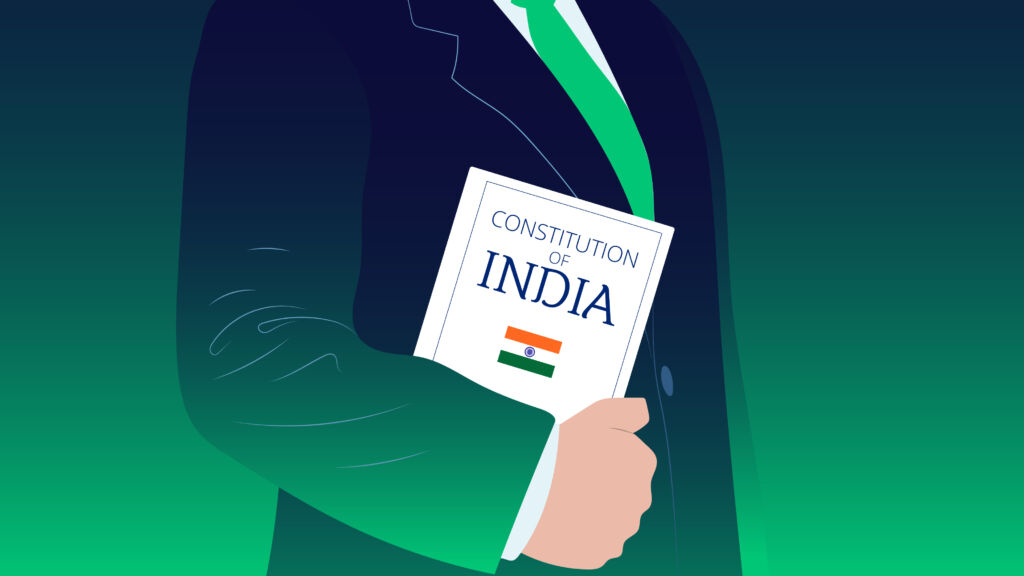
The Constitution of India, adopted in 1950, is a remarkable document that embodies the values of justice, equality, liberty, and fraternity. One of its most defining aspects is its inclusive language, ensuring that no individual is excluded based on gender, caste, religion, language, disability, sexual orientation, or socio-economic background. The framers of the Constitution were deeply aware of India’s diversity and took deliberate steps to make the document representative, accessible, and progressive. However, while the Constitution provides a strong foundation for inclusion, the question remains: Is this inclusivity truly practiced in everyday governance and society?
Gender-Neutral & Inclusive Language: Theory vs. Reality
The Indian Constitution avoids gendered language that could imply male dominance, setting a progressive precedent. For instance:
- Article 15 prohibits discrimination on the grounds of religion, race, caste, sex, or place of birth, ensuring gender neutrality.
- Article 39 directs the state to ensure equal pay for equal work for both men and women.
- The usage of terms like ‘person’ instead of ‘man’ ensures that laws apply equally to all genders.
However, in practice, gender disparity remains a pressing issue. Women’s workforce participation is significantly lower than men’s, wage gaps persist, and patriarchal norms still dictate many social and economic spheres. Despite the constitutional promise, gender justice remains an ongoing struggle.
LGBTQ+ Rights & Recognition: Legal Progress but Societal Challenges
Although the Constitution does not explicitly mention sexual orientation or gender identity, progressive judicial interpretations have expanded inclusivity:
- The NALSA judgment (2014) recognized transgender persons as a third gender, granting them fundamental rights under the Constitution.
- Section 377 of the IPC was decriminalized in 2018, affirming the rights of LGBTQ+ individuals to live with dignity.
- The Transgender Persons (Protection of Rights) Act, 2019 seeks to provide legal protections, but implementation gaps and societal discrimination persist.
Despite these legal advancements, LGBTQ+ individuals continue to face social exclusion, workplace discrimination, and a lack of representation in political and legal spaces. The struggle for full constitutional and societal acceptance remains ongoing.
Linguistic Inclusivity: A Constitutional Promise, But Is It Enough?
India is a multilingual nation with 22 officially recognized languages under the Eighth Schedule of the Constitution. The Constitution promotes inclusivity by:
- Recognizing Hindi and English as official languages while respecting the linguistic diversity of states.
- Allowing states to legislate in their own official languages, preventing linguistic hegemony.
- Protecting minority languages through Articles 29 and 30, which safeguard the cultural and educational rights of linguistic minorities.
Yet, linguistic marginalization persists. Many indigenous and regional languages face extinction, and English remains the dominant language in courts, higher education, and governance, making access to justice and opportunities difficult for non-English speakers. The practical implementation of linguistic inclusivity remains incomplete.
Caste & Social Inclusion: A Work in Progress
The Constitution actively seeks to rectify historical inequalities by embedding provisions that uplift marginalized communities:
- Article 17 abolishes untouchability in all forms.
- Article 46 directs the state to promote the educational and economic interests of Scheduled Castes, Scheduled Tribes, and other weaker sections.
- Reservation policies under Articles 15(4) and 16(4) ensure representation in education and public employment.
Yet, caste-based discrimination continues in various forms. Dalit and tribal communities still face violence, exclusion, and systemic barriers to education and employment. While reservation policies provide opportunities, their effectiveness is often debated due to loopholes, inadequate implementation, and growing caste-based inequalities in private sector employment and economic mobility.
Religious & Cultural Inclusion: A Constitutional Vision vs. Ground Reality
The Indian Constitution upholds secularism, meaning the state treats all religions with equal respect. Provisions that ensure religious inclusivity include:
- Article 25 guarantees freedom of conscience and free profession, practice, and propagation of religion.
- Article 26 protects the rights of religious communities to manage their affairs.
- Article 29 safeguards cultural and educational rights, ensuring minority communities can preserve their heritage.
However, in practice, religious tensions and biases often overshadow constitutional ideals. Instances of communal violence, mob lynching, and discrimination against religious minorities have raised concerns over whether secularism is truly practiced or selectively applied.
Accessibility & Legal Inclusivity: Gaps in Implementation for Persons with Disabilities
To make constitutional provisions accessible to all:
- Laws and government documents are translated into multiple regional languages.
- Legal aid and awareness programs are mandated to ensure citizens, irrespective of education or economic status, can access justice.
- The Constitution promotes rights for persons with disabilities through policy frameworks and social justice mandates.
Despite these efforts, persons with disabilities face persistent barriers in employment, education, and accessibility to public spaces. The Rights of Persons with Disabilities Act, 2016 was a significant step forward, but implementation remains weak, with a lack of infrastructure and awareness hindering true inclusion.
Conclusion: Bridging the Gap Between Constitutional Ideals & Reality
The Indian Constitution’s inclusive language is a testament to its vision of a just, egalitarian, and democratic society. However, there remains a gap between the constitutional promises and ground realities. While the legal framework is robust, social, economic, and political challenges continue to hinder true inclusivity. Addressing these disparities requires:
- Stronger implementation of affirmative action policies.
- Greater representation of marginalized communities in leadership roles.
- Consistent judicial and governmental efforts to make inclusion a lived reality.
Ultimately, the Constitution provides a progressive roadmap for inclusivity, but its true success lies in its practical execution—a responsibility shared by the government, civil society, and citizens alike. Without active efforts to bridge the gap, the ideals enshrined in the Constitution will remain mere aspirations rather than lived realities.


